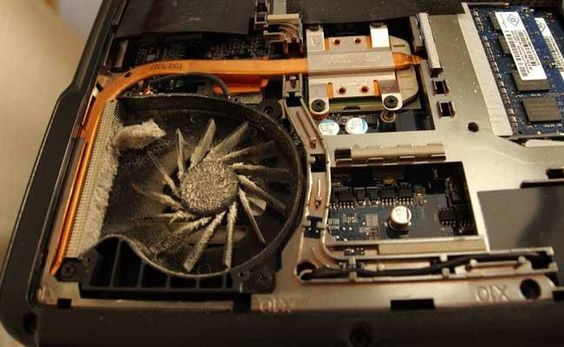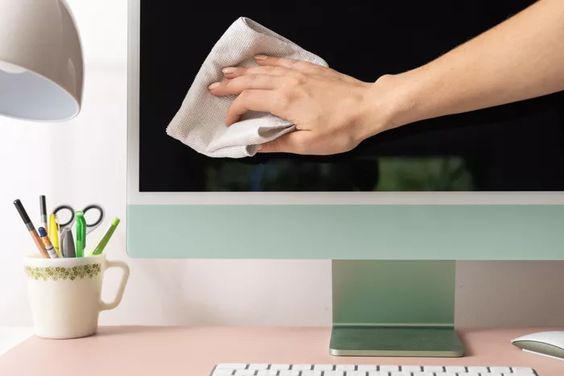How to Clean Your Computer Safely
To safely clean your computer, prioritize preventing static electricity damage. Power down and unplug everything. Open the case (desktop only) in a well-ventilated area. Use compressed air to blow out dust from vents and components, avoiding the fans themselves. For the exterior, a damp microfiber cloth, with just water, tackles dust and fingerprints on the case and screen. Never use harsh chemicals or abrasive cloths. Let everything dry completely before reassembling or powering on your computer.
Computer Cleaning
Importance of Cleaning Your Computer
Regular cleaning is crucial for maintaining the performance and longevity of your computer. Dust, dirt, and debris can accumulate over time, leading to overheating and reduced airflow, which can impact the computer’s performance and lifespan.
Risks of Neglecting Computer Maintenance
Neglecting computer maintenance can result in various issues such as overheating, hardware failure, and reduced performance. Additionally, a dirty computer can harbor germs and bacteria, posing health risks to users. Also, read about How to Increase RAM on Laptop
Preparing for Cleaning
Before you begin cleaning your computer, it’s essential to gather the necessary tools and take some safety precautions.
Cleaning the Exterior
Removing Dust and Debris from the Keyboard
Start by turning off your computer and unplugging the keyboard. Use compressed air or a soft brush to remove dust and debris from between the keys.
Wiping Down the Screen and Monitor
Use a microfiber cloth lightly dampened with water or a screen-cleaning solution to gently wipe the screen and monitor. Avoid using harsh chemicals or abrasive materials that could damage the screen.
Cleaning the Exterior Casing
Use a soft, lint-free cloth dampened with water to wipe down the exterior casing of your computer. For stubborn stains, you can use a mild cleaning solution.
Cleaning the Interior
Shutting Down the Computer Properly
Before opening the computer case, make sure to shut down the computer properly and unplug it from the power source.
Opening the Computer Case (for Desktops)
If you have a desktop computer, carefully remove the side panel to access the interior components.
Using Compressed Air to Remove Dust
Use compressed air to blow away dust from components such as the motherboard, CPU, and graphics card. Hold fans in place while cleaning to prevent them from spinning too quickly and potentially causing damage.
Cleaning Fans and Vents
Use a soft brush or cotton swab to gently clean fans and vents to ensure proper airflow and cooling.

Cleaning Peripherals
Cleaning the Mouse
For optical or laser mice, wipe the sensor with a soft cloth to remove dust and dirt. For mechanical mice, remove the ball and clean the rollers inside.
Cleaning the Mousepad
If you use a mousepad, wipe it down with a damp cloth to remove dirt and grime.
Cleaning External Drives and Other Peripherals
Use a soft cloth lightly dampened with water to wipe down external drives, printers, and other peripherals. Discover more about How to Make Your Laptop Faster
Software Cleaning
Removing Unnecessary Files and Programs
Regularly delete temporary files, cache files, and unused programs to free up disk space and improve performance.
Running Antivirus and Malware Scans
Run antivirus and malware scans regularly to detect and remove any threats that could compromise your computer’s security and performance.
Updating Software and Drivers
Keep your operating system, software, and drivers up to date to ensure optimal performance and security.
Deep Cleaning Tips
Using Cleaning Solutions for Stubborn Stains
For stubborn stains or marks on the exterior casing, use a mild cleaning solution and a soft cloth to gently wipe them away.
Cleaning Hard-to-Reach Areas
Use cotton swabs or small brushes to clean hard-to-reach areas such as crevices and corners.
Cleaning Inside the Keyboard (for Advanced Users)
For advanced users comfortable with disassembling their keyboards, carefully remove the keys and clean underneath them using compressed air and a soft brush.

Maintaining a Clean Computer
Setting Up a Regular Cleaning Schedule
Create a cleaning schedule to ensure that you regularly clean your computer and peripherals to prevent dust buildup and maintain optimal performance.
Using Protective Covers and Cases
Consider using protective covers and cases for your computer and peripherals to minimize dust and dirt accumulation.
Keeping Food and Drinks Away from the Computer
Avoid eating and drinking near your computer to prevent spills and crumbs from getting inside and causing damage.
Conclusion
Regularly cleaning your computer is essential for maintaining its performance, longevity, and hygiene. By following the steps outlined in this guide, you can safely and effectively clean your computer inside and out, ensuring that it continues to run smoothly for years to come.
FAQs
How often should I clean my computer?
It’s recommended to clean your computer at least once every few months, or more frequently if you notice dust buildup or performance issues.
Can I use household cleaning products to clean my computer?
It’s best to avoid using harsh chemicals or abrasive materials on your computer, as they can damage sensitive components. Stick to using gentle cleaning solutions and materials.
Do I need to disconnect my computer from power before cleaning it?
Yes, it’s essential to shut down your computer properly and unplug it from the power source before cleaning to avoid the risk of electrical shock.
Can I use a vacuum cleaner to clean my computer?
While a vacuum cleaner can be effective for removing dust, it’s not recommended for cleaning the interior of your computer, as it can generate static electricity and potentially damage components.
What should I do if I accidentally spill liquid on my computer?
If you spill liquid on your computer, immediately turn it off, unplug it, and let it dry completely before attempting to use it again. If necessary, seek professional assistance for cleaning and repairs.
